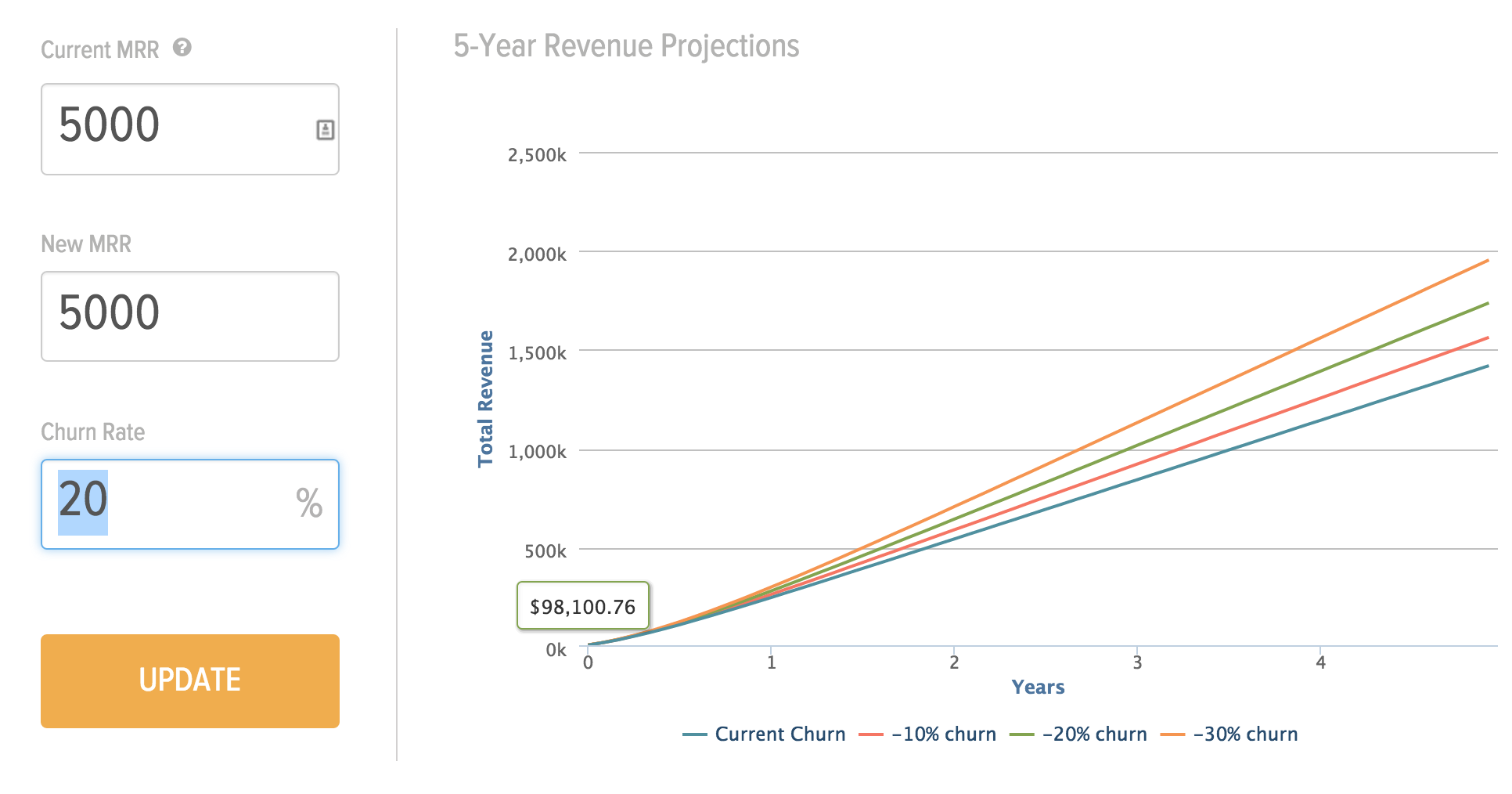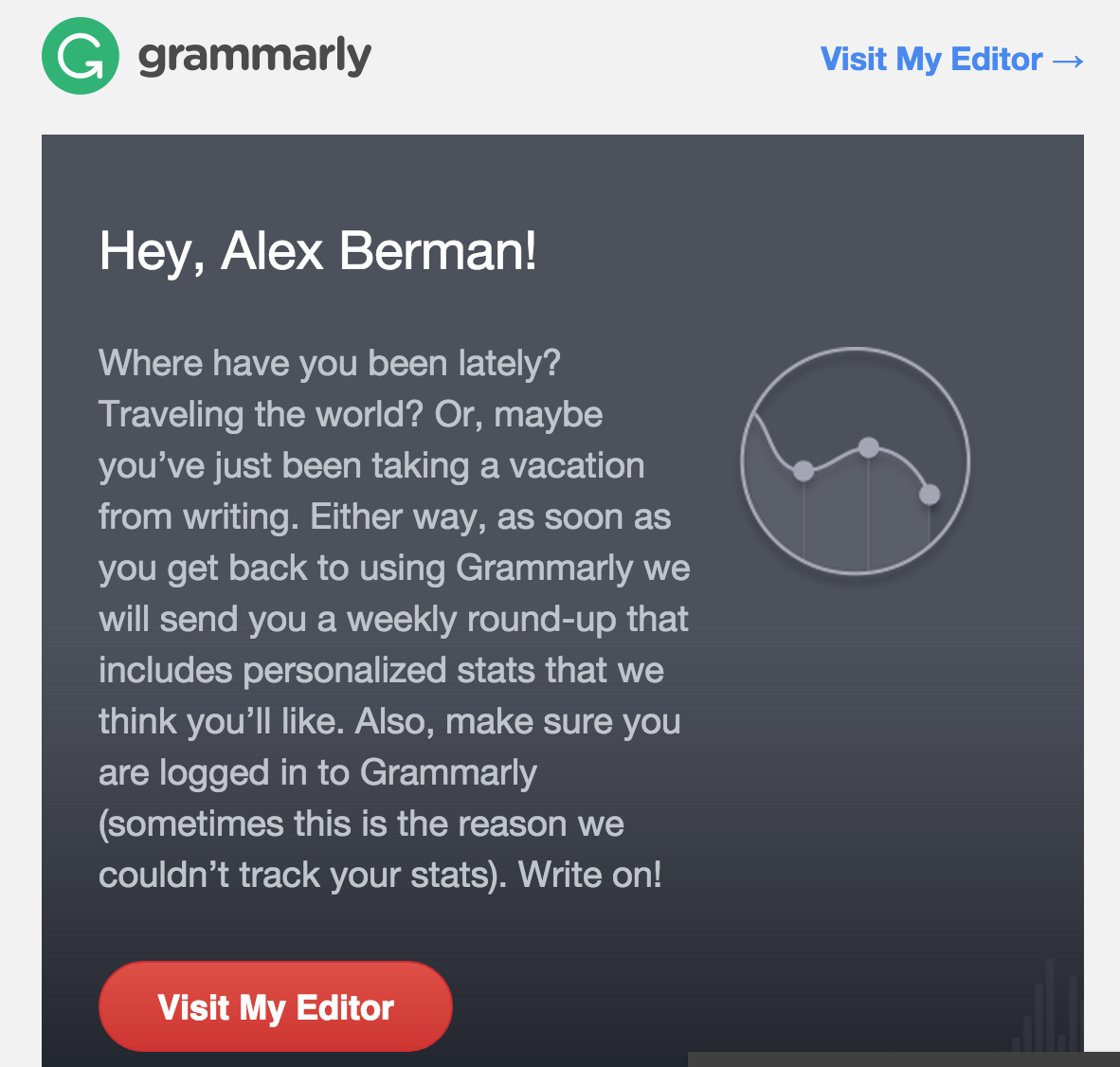
Lots of businesses focus in the early days on acquiring massive amounts of new users. I’m in this same boat. My thought process looks like:
“Add as many people into the sales funnel as possible, 20-30% will convert into retainer clients, and we’ll keep growing and moving forward.”
It’s a great mindset in the beginning. But today I want to talk about something a lot of SaaS clients have to deal with every single day: Customer Churn Rate.
What is that boring sounding phrase?
Churn Rate Definition
Churn Rate means the percentage of users that fail to sign up for another month of service after the initial buy.
For us that would mean clients that buy an initial month of blog posts and promotion, and then quit before the second month.
A simple way to calculate this comes from the guys at Churn Rate 101. Here’s some example data:
Take a second and run that calculation for your business. Compare that to the amount of new customers that come in each month.
If your SaaS product is losing 1 customer a month, and gaining 1 customer a month, you’re growing by 0 customers. Not bad, but not optimal.
However, if you run the numbers and see that you’re LOSING more customers than you gain each month – you’re in trouble.
I did some research on the top churn rate articles, and here are strategies they all have in common along with some steps you can take to implement each one.
Find out why people are canceling
This sounds like a simple enough point, but it’s mentioned in all the top articles, and worth take a look at. Here are a few of the best tactics to do that:
Step One: Survey your customers after they leave your product… you have their email addresses.
One of the easiest ways to find out why people are leaving is to ASK THEM. Here’s an awesome email script from Following the Rules that you can use:
Customer Development Script:
Subject: Hi from Alex
Hi Steve,
When I saw your company in <magazine or blog> I was blown away by what you guys are doing. Then I looked at your site, and realized you have a great app, but very few customers.
The good news is I’m working on a product right now that will help founders like you get more users to their sites. It would be great to get your opinion on a few things to make sure it’s the best product ever.
The call won’t take more than 10 minutes, and you don’t have to prep.
Are you free this Thursday afternoon or Friday?
Thanks again Steve,
-Alex
P.S. If it’s easier, I can send you the questions via email.
Step Two: Analyze the data and find commonalities
Once you have a bunch of feedback from these customers, you’ll start seeing commonalities. “Your product is crashing” “I was banned for no reason” “Hubspot does xyz better than you, etc”
Kissmetrics goes into amazing detail on how to use data from surveys to enhance your products. Here’s a quick synopsis:
Qualitative data about a certain market can give you the information you need to ensure your product fits. In the ‘90s, Google was just another search engine. They could see by using other engines, and watching people use those engines, that there was room for something better.
Qualitative data can help you identify frustrations and needs in market places. When you find those needs, you’ll have found a niche for your SaaS.
Step Three: Make changes based on feedback and keep testing
Let’s say you learn that the biggest reason people quit is because your app keeps crashing. Guess what? Fix that bug.
Then wait 30 days and see if your churn rate goes down.
If it does, congrats! You found the issue.. onto the next thing. If not, review the survey data and fix something else.
Define your competitive advantage
The next thing a lot of these sites talk about is having a competitive advantage meaning… what do you do better than the other guys?
At x27marketing, our advantage is that we promote our content for clients. There a bunch of freelance writers and content companies that write articles.. and their content is great. Uniformly great across the board.
A customer of ours could go to any number of shops and buy awesome articles, but nobody else is packaging PROMOTION – and it makes all the difference.
Here are three tips to improve or define your competitive advantage:
Step One: Benchmark against competitors
Open up a google doc and list out your top 5 competitors. Don’t have any competitors because your product is so unique? Shut up and please go home. Come back when you learn how to business.
Set up a doc that looks like this:
Fill your own competitors info into those slots. Once you have a good idea of what everyone else is doing awesome, you’ll need to:
Step Two: Talk to Your Customers
This goes back to the first bullet in this articles about surveying customers.. but this time you’ll be surveying in person during new business calls. You want to talk to customers that haven’t bought from you yet.
Ask a few questions like:
- Are there any other services you’re looking at to do [thing your business does]?
- What’s the most appealing thing about the ones you’re looking at?
- If we did [competitive advantage you’re testing] would that make you more likely to use us?
Get feedback and keep moving forward.
Step Three: Implement the changes and test
Once you have a solid idea of what your competitive advantage could be, make it a feature on your website. Use a tool like Optimizely to test it on a certain percentage of cold traffic and see if your number of signups increases. Then wait 30 days to see if your churn rate goes up or down.
Here’s an awesome article that will intro you to A/B testing.
After you’ve figured out which competitive advantage brings in the most customers, it’s not your job to deliver on that promise. If you’re the only guys in town doing blog post promotion, you sure as hell better be the best at it.
Talk gets you customers, but it doesn’t keep those customers.
Identify at risk customers
The third point also involves talking to your customers which should set off some bells in your mind.
It’s very important to talk to your customers at all stages of the buying cycle. The more you’re able to interface with your guys the more value you can deliver and the less likely they’ll be to leave you.
Here’s a three step method to find your at risk customers:
Step One: Setup tracking on all your pages
You want to see if and when your customers stop using your product. The easiest way to measure that is to use a tool like Hubspot to measure how long it’s been since a user opened up or logged in to your site.
There are a number of tools you can use then to contact those people automatically or manually and ask them specifically why they stopped using and what you can do to get them back.
Which brings us to:
Step Two: Reach out to inactive users
Pull up these user’s email addresses and ask them what’s going on. Here’s an awesome email I got from Grammarly that was well worded. Feel free to rip it off, they might not mind.
Step Three: If you see patterns, make changes
If all of your customers are quitting for the same reason… change it. Same as the takeaways from the previous strategies.
Key Takeaways
The thing that all of these have in common is to always be on the lookout for ways your business might be failing users or could be better.
Once you identify a few, make those changes, test them in the actual marketplace, and measure to see if your churn rate goes up or down.
If you need awesome content and are tired of writing and promoting articles yourself.. x27marketing can help. Learn more here: https://www.x27marketing.com








